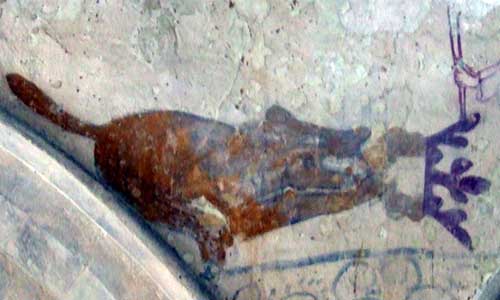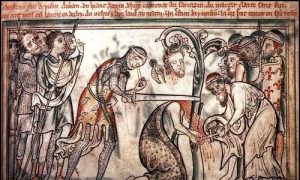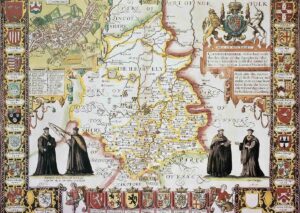A missing head and the cousin of man’s best friend! JACOB MILNESTEIN tells us the curious case of St Edmund’s bestial benefactor

“When my body was pierced with arrows and the Danes removed my head and cast it into the forest, this wolf,” he gestured at the animal that lingered now at their sides despite the passing of the dead, “guarded my head, all but starving itself, yet like Christ in the wilderness, avoiding temptation.”
Such was the fate of St Edmund, both king and martyr!
Who was St Edmund?
Born in AD 841, Edmund was the king of the East Angles, the possible son of Æthelweard. According to legend, he was crowned on Christmas Day in 854 and died later in battle upon the 20th November 869.
In the tradition of Christian soldiers, Edmund represents not only a warrior but also a monarch, the medieval dichotomy of Christ represented as both king and soldier no better represented elsewhere than in both Edmund’s role and in his final fate.
Pinned to a tree in a further comparison with Christ, St Edmund was executed by the fabled Viking warriors, Hingwar and Hubba, soldiers
in what was termed ‘the Great Heathen Army’. The saint was repeatedly shot with arrows and, at the very last, decapitated.
Before the head could strike the ground it was seized upon by the evil Hingwar and tossed into the forest in an act of disrespect that would deny Edmund’s defeated allies the chance to offer their king a proper Christian funeral.
Forced to wait until the Vikings had lost interest in their sport, Edmund’s supporters still resolved to venture into the forest regardless.
Much to the surprise of the faithful, who must have resolved themselves to never recovering the head of their king due to the cruelty of both the Vikings and the natural predators of the forest, they soon heard the voice of Edmund calling them from deep amongst the darkened trees.
Venturing further, they found the head of St Edmund resting between the paws of a waiting wolf, unmolested and guarded from harm by other animals.
Falling silent upon the arrival of his allies, the head was retrieved and the wolf accompanied the soldiers to the edge of the forest, acting as both guide and guardian until they once more reached the town.
The Great Heathen Army marched on into Wessex unpunished and unopposed yet such was the nobility of the king and the fame of his protection by the wolf that in time, the Vikings also came to venerate him.
Still popular today, the saint is often hailed as an alternative to St George as England’s national saint.





